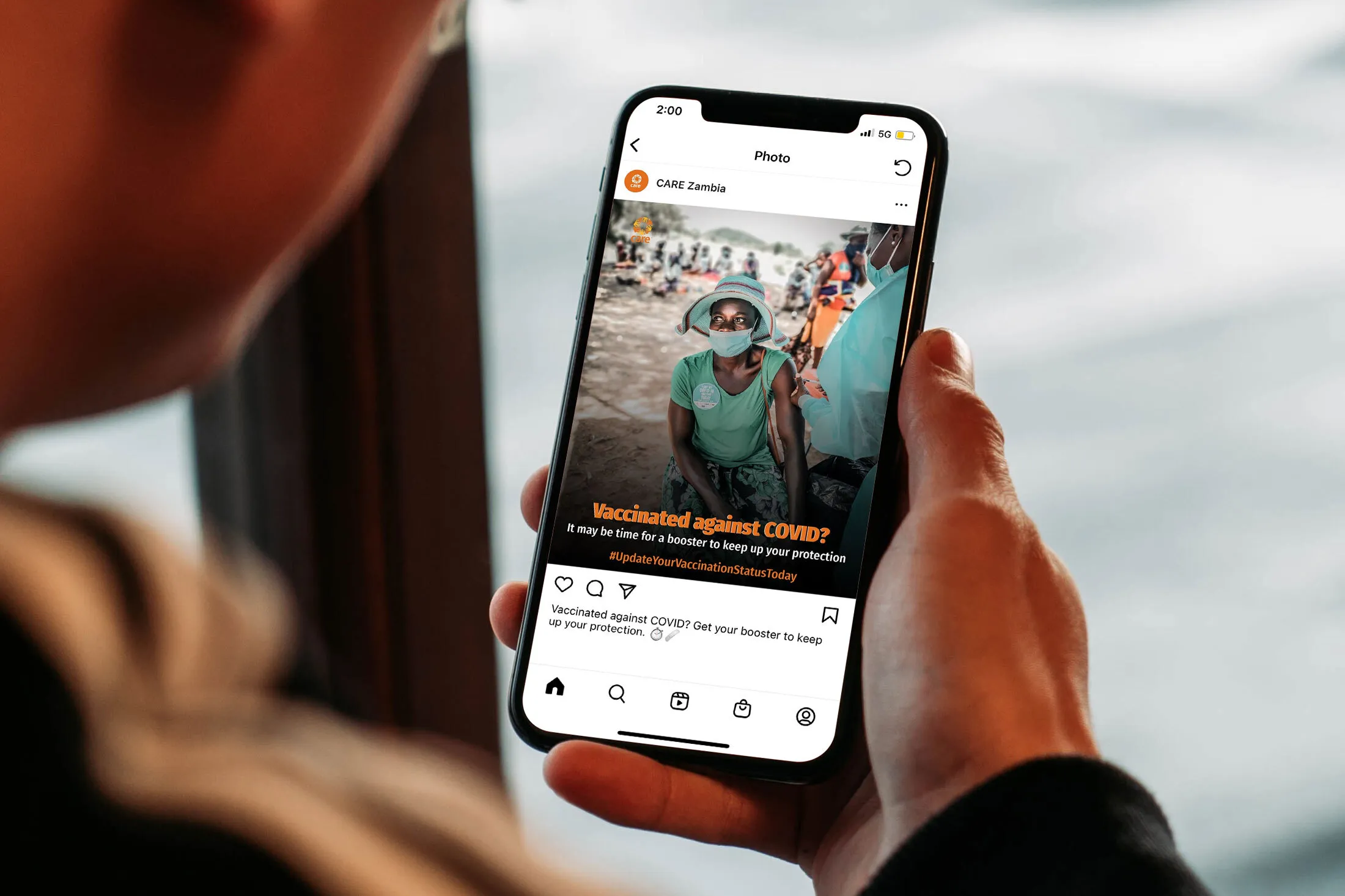CARE’s efforts in social and behavior change communication (SBCC)
Social and behavior change communication (SBCC) efforts weren’t new to CARE. CARE program teams in countries around the world use SBCC tactics to increase awareness about public health, gender-based violence, economic resilience, food security, climate change, and education. SBCC is the strategic use of communication approaches to promote shifts in knowledge, attitude, behavior, social norms, and/or beliefs. Traditionally, CARE staff have delivered SBCC campaigns through one-on-one, one-to-few and one-to-many conversations in villages and communities where target populations live and work.
These in-person methods, while often very effective, can be costly to deliver and thus difficult to scale. At times, program staff have leveraged local radio advertising to reach target audiences; however, that method can also be costly, and while the message may reach more people, they are not necessarily the right people.
Using paid social media as an SBCC tool was intriguing because social media advertising can be targeted by geography, age, gender, and interests to reach precise audiences at a low cost. What we didn’t know was whether social media ads could or would shift knowledge, attitudes, or behavior – and if they did, how would we measure the change? Traditional SBCC methods are often evaluated through individualized surveys that are executed in person – again, an expensive, but accurate way to understand the efficacy of the messaging. We wondered how we would measure the success of a campaign running on social media.
Our first campaign ran in late 2020 and was a test designed to see if we could increase U.S. audiences’ willingness to get a flu shot. Over the course of the next two years, we ran over 60 campaigns in 46 countries designed to promote COVID prevention behaviors, reduce COVID vaccine hesitancy, encourage acceptance of COVID booster shots, and, in Latin America, shift social norms around gender-based violence. We created thoughtful campaign plans with established communications, behavior change, and learning goals, and measured our performance at every turn. We learned a tremendous amount over the course of 2021 and 2022, and we hope this guide provides you with the benefit of those lessons. We hope it serves the community of practice and would love to learn more about your experiences using social media as a social and behavior change modality.
I’d like to make an additional appeal to the philanthropic community supporting impact initiatives around the globe. The unprecedented circumstances of the COVID-19 pandemic and our partnership with Meta enabled our team to make incredible strides leveraging social media as a tool for SBCC campaigns for positive public health outcomes. Meta contributed millions of dollars in ad credits supporting experimentation and learning for more than 46 CARE country offices as well as teams at many other international NGOs. Moving forward, as you receive proposals from grantees, I hope you will consider funding additional innovations and tests in this area. Together we can leverage digital technologies to scale impact.
Sincerely,
Jessica Kirkwood
AVP, Supporter Engagement
CARE USA
Introduction to SBCC
What is SBCC?
SBCC is the strategic use of communication to promote positive health outcomes based on proven theories and models of behavior change. SBCC employs a systematic process beginning with formative research and behavior analysis, followed by communication planning, implementation and monitoring, and evaluation. Audiences are carefully segmented, messages and materials are pre-tested, and mass media (which include radio, television, billboards, print material, internet), interpersonal channels (such as client-provider interaction, group presentations) and community mobilization are used to achieve defined behavior objectives.
Why should you conduct an SBCC campaign?
International development programs often use SBCC to drive public health outcomes – for example, to convince people that early childhood immunization, flu shots, COVID vaccines and boosters, etc., are safe and important. It can be used to convince pregnant women of the importance of prenatal care. It can be used to reduce acceptance of social norms around gender-based violence or to promote the importance of alternative fuels to protect the environment.
From late 2020 through 2022, CARE partnered with Meta to experiment with using social media as an SBCC modality. Together we addressed a diverse range of SBCC campaign topics such as COVID prevention behaviors, vaccine hesitancy, early childhood immunization, promoting maternal health, educating about positive nutrition, community trust, and reducing gender-based violence. CARE’s first campaign aimed to reduce COVID vaccine hesitancy across 19 countries. CARE country office teams joined Meta-led workshops to learn how to create relevant campaigns encouraging vaccine adoption. The country offices then developed locally led campaigns using best practices learned during the eight-week series. Some campaigns were tied to pre-existing, off-line programming.

